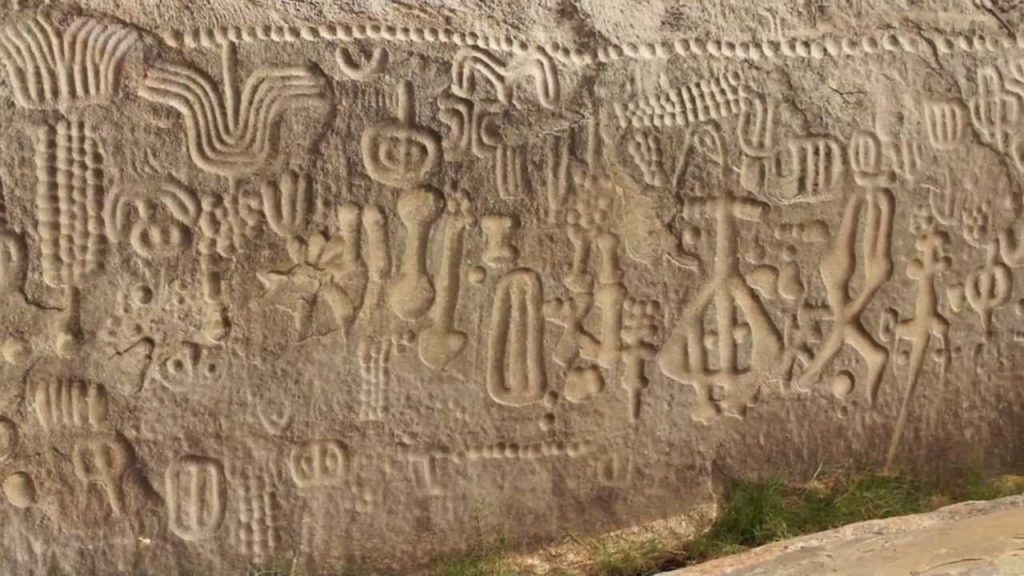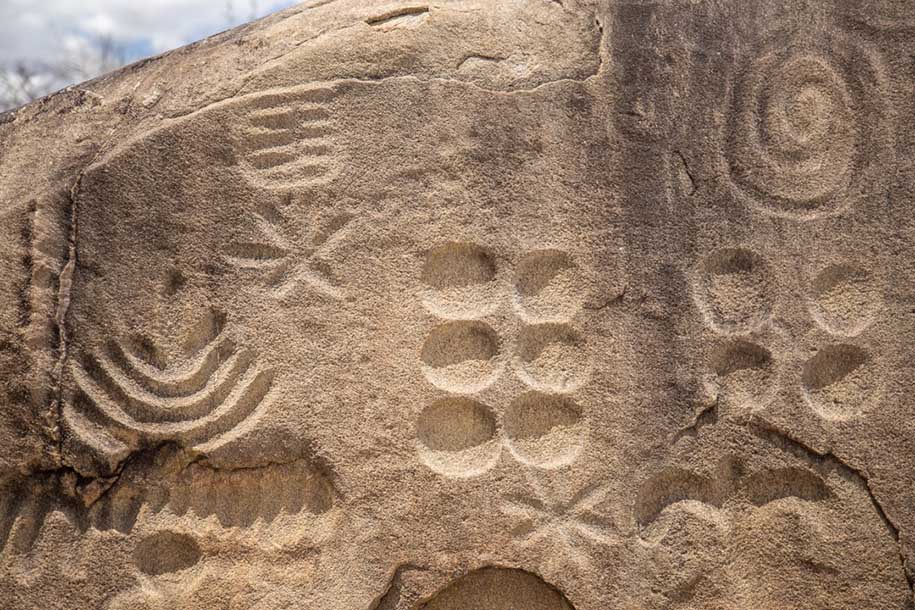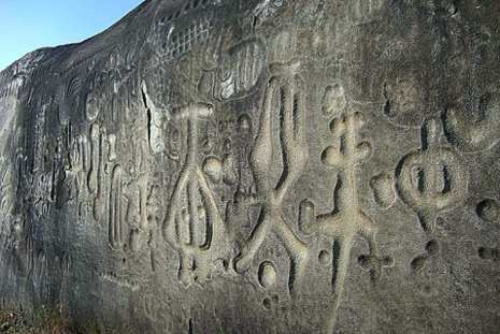The Enigmatic Pedra Do Inga

Pedra do Inga is the Portuguese term used to indicate a stone found in the municipality of Inga, Brazil. The rock, which measures an impressive 46 meters in length and almost 4 in height, is located in the state of Paraiba, not far from the Inga River.
Its surface is covered with an intricate network of designs and symbols with an unknown meaning. We don’t even know for sure how they were made, or when. According to the dating decided by the carbon 14 examination, it should date back to 6000 years ago. This dating, however, is far from definitive.
Being in an area subject to frequent flooding, the stone has sediments on the surface that could compromise a correct time reading. Over the centuries it has been vandalized several times, and some of the inscriptions have simply been eroded by time and are no longer clearly legible. Even so, the Pedra do Inga does not fail to arouse a shock when viewed in its superb entirety, which covers an area of 250 square meters.
If we affirm that the Pedra do Inga is one of the most fascinating mysteries of contemporary archeology, we are not going very far from the truth. In fact, scholars groped in the dark and do not know how to give a univocal explanation to the numerous signs (we are talking about over 400 petroglyphs) engraved on it. However, there are some currents of thought, not universally shared, which could throw some light on this writing which perhaps comes from a distant past.
The first hypothesis – the one supported by official science – provides petroglyphs of Ingá an exceptional importance from the archeoastronomical point of view. In 1976, the Spanish engineer Francisco Pavía Alemany started a mathematical study of this archaeological monument. The first results were published in 1986 by the Instituto of Arqueologia Brasileira (Pavía Alemany F. 1986).
He identified in Inga a series of “bowls” and another petroglyph etched into the vertical surface of the wall of Inga that formed a solar calendar. The Agrupación Astronómica de la Safor published in 2005 a summary of this work in its official bulletin Huygens No. 53 (Pavía Alemany F. 2005).

Later, F. Pavia continued the study, this time focusing on a series of signs engraved on the rocky surface, which he interpreted as a large number of “stars” grouped forming “constellations”. The coexistence of the “bowls” and the “constellations” in the same rock is thought to give it archaeoastronomical significance.
In 2006, the Egyptologist and archaeoastronomer Jose Lull coordinated the publication of a book entitled Trabajos de Arqueoastronomía. Ejemplos de Africa, America, Europe y Oceania, a compendium of thirteen articles written by archaeoastronomers.
Among these items are “The archaeoastronomical ensemble of Inga” where is exposed the study of both the bowls and constellations mentioned before and the reasons that justify Inga as an exceptional archaeoastronomical monument, like no other in the world.
If so, this would make the Pedra do Inga one of the most important prehistoric monuments ever, and also one of the least appreciated for its actual value. Alemany’s theses were also subsequently resumed and corroborated and confirmed with further investigations. However, there is also another hypothesis, the one that official science rejects as it does with everything that doesn’t fit into pre-established schemes.

There is also another eminent researcher who has spent most of his life investigating the meaning of the petroglyphs engraved on the rock. This is Gabriele D’Annunzio Baraldi, an Italian scholar who in 1988 began his examination of the signs engraved on the Pedra do Inga. In addition to the Milky Way and other signs that could be stars, he also found symbols that seemed familiar to him. They closely resembled the Hittite script.
But not only. Comparing the results of his studies with other eminent linguists, it was discovered that the signs of the Pedra do Inga are traceable to many different civilizations. For example, there are some that recall the Egyptian writing called “demotic”, which refers to one of the last phases of this civilization. And that’s not all: the Pedra do Inga inscriptions recall Nordic runes, Celtic symbols, Phoenician scriptures, even engravings from Easter Island. In a word, it seems written in some kind of universal language.
This is why Baraldi – considered one of the last true supporters of the existence of Atlantis – thought it was the product of the diaspora of a people who lived over 10,000 years ago, which a catastrophe had removed from their place of origin. From the descendants of Atlantis had then originated the other different civilizations that had spread around the globe, east and west.
